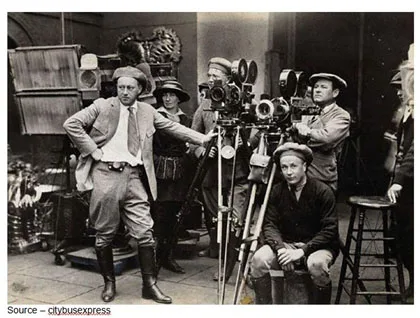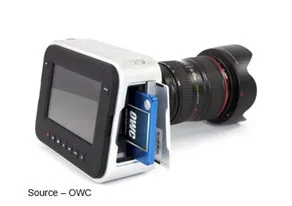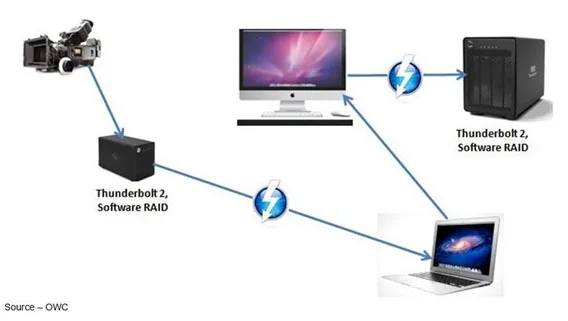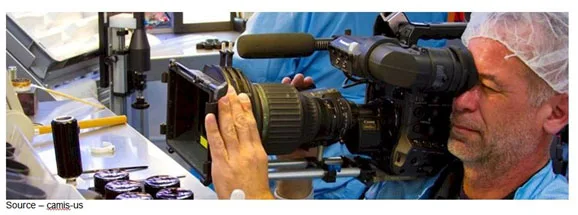Most Filmmakers Aren’t in Hollywood or on YouTube – They’re Others
 Companies do a great job of categorizing/monetizing two segments of the film industry:
Companies do a great job of categorizing/monetizing two segments of the film industry:
- Tens of thousands of kids/parents who make good to little or no money shooting video shorts and uploading them on YouTube (600 hrs of content a minute), Facebook, Tumbler, you name it. It’s a loosely knit crowd that goes to events like VinCon to cheer and hope for a studio contract, follow the Streamy Awards.
- Large, medium, small studios doing $10M – $100M plus films using project/contract film capture/production people turning out short to full-length movies. They’re part of a multi-billion dollar industry that attends IBC (International Broadcast Conference) and NAB (National Association of Broadcasting) show.
The poor underground indie filmmakers don’t even rate their own show, except for one night of SuperMeet the first evening of IBC.
They don’t rate a trade show or research report because they sorta’, kinda’ fit in the “pro M&E” category or are shoved into another business category.
I have never met a cinematographer or DP (director of photography), camera person, editor, CG (computer graphics), FX person who didn’t have a real job and a dream.
Coming Up Short – Most industry analysts focus on films for film sake (entertainment); but a large number of people trained in the art of film put their talents and expertise to work on projects that educate, inform, entertain and sell all at the same time. Most of the work is creative and enjoyed by people every day around the globe but seldom called filmmaking.
There are 10s of thousands who put their training, talent to work every day but aren’t included in the filmmaker surveys. They:
- are digital signage providers (AV content folks)
- shoot/produce ads (so they’re called ad folks)
- capture exciting company facility informational and sales videos
- do company educational, support videos (so they’re called HR – human resources – or Marcom – marketing communications people)
- create education, healthcare informational, documentaries (so they’re part of the AV group
- run HOW (house of worship) operations (again, the AV group)
- shoot sports for study, analysis, improvement

Open Solutions – During the Flash Memory Summit, Blackmagic’s Dan May said the company was following a program of open source when it came to storage to provide the best value to filmmakers. In another session, OWC’s Chris Haeffner agreed that proprietary solutions weren’t in the best interest of filmmakers who are focused on time and financial budgets.
There has been a rapid introduction of economical, easy-to-use cameras like the open platform Blackmagic micro cinema and other tools such as Adobe Cloud, DaVinci, Muvee Reveal, iMovie and easy production tools along with low-cost storage. This has created a whole new filmmaking market many people don’t even know exists.
The products are put to use producing three, 18- or 30-minute films by folks who aren’t classified as filmmakers.
Safe Workflow – All of the content captured by the camera lens has to move as quickly and securely as possible through production, post production and display and every frame has to be available just in case. As a result, 4K film production storage quickly grows by 4X, compared to HD video.
Now you’d think that 4K workflow should be the same as HD, but it requires an added level of infrastructure with four times more pixels, a higher bit rate, more color depth and more detail. It requires the best source material possible, more bandwidth and significantly more storage.
Bringing Signs Alive
Companies like BrightSign have thrived because of organizations realizing that dynamic and engaging digital signs capture the attention of their audience and drive sales far better than print signage or illuminated pictures. Other digital signage advantages have been equally compelling such as the ability to make changes and updates remotely and deliver different content to different screens on a specified schedule.
Jeff Hastings, president of BrightSign, the global market leader in digital signage players, noted that 4K displays will soon become the dominant standard for digital signage for several reasons. The cost of producing new high-quality 4K video content is coming down; the better picture quality is noticeable and produces greater viewer engagement leading to higher ROI. The glass manufacturers for commercial displays will switch to 4K and there will be no going back.
 Sign of the Times – Digital signage is being used almost everywhere today and the messages have to be as good – if not better – than the content people see on the theater screen or 4K TV set.
Sign of the Times – Digital signage is being used almost everywhere today and the messages have to be as good – if not better – than the content people see on the theater screen or 4K TV set.
Whatever the digital signage application, people expect to view the highest-quality video possible–especially as it applies to luxury brands. These brands were reluctant to move to digital signage when the visual quality of a print sign exceeded video quality. With 4K video, the quality is just as good as high-resolution print.
4K digital signage is a value proposition because it can increase sales through better shopper engagement and reduces the recurring costs associated with updates and changes. At retail, and in almost every market application, we are beginning to see management and viewers demanding 4K-quality video.
As a result, we can expect that we will see most organizations switching to 4K displays and content and reserving some of the annual AV budget for renewing, refreshing and constantly improving content. You get irritated seeing the same ad on TV all the time, and it’s the same with a video in a house of worship, school, hospital, business, or public facility.
Content is still king, and it’s just getting better and better!
Healthcare Video
The multi, multibillion dollar healthcare industry (hospitals, clinics, physicians and other practitioners) now incorporate internal and outreach video programs.
Today, there are more than 5,000 hospitals in the U.S.:
- 49 percent 1-100 beds
- 41 percent 101-400 beds
- 11 percent 401+ beds
 Informed Patients – Healthcare institutions and practitioners have found that today’s 4K cameras and production tools are very effective in educating and assisting patients and families. The better the individuals are informed, the better the outcome.
Informed Patients – Healthcare institutions and practitioners have found that today’s 4K cameras and production tools are very effective in educating and assisting patients and families. The better the individuals are informed, the better the outcome.
Even the smallest hospitals have a formal or informal film/video program that includes:
- Direct-to-consumer promotional and education videos
- Healthcare professional education and training videos
- Training with sales, safety and process content
- Internal and external product communications videos
- Meeting, convention, trade show, conference and special event videos
- Employee internal communications videos
- Corporate/image communications and investor relations content
Healthcare industry officials say the new emphasis on educational, informational and community/patient outreach films is a pro-active approach that has been evolving over the past five years.
The AHA estimates that U.S. healthcare facilities and practitioners invest about $800M in filmmaking products/services annually and that globally, more than $4B is invested in video content to educate, inform and assist consumers and caregivers.
Customer Facing
Consumer product retailers and manufacturers (hard and soft goods0 were perhaps the first business category to begin building libraries of high-quality how-to, troubleshooting, product description and sales videos.
In the past three years, as consumers have become more web savvy and visually focused, eMarketer reported that people expect to go to a firm’s web site to:
- View a product video to determine if the product/service will meet their needs without sales staff intervention
- Use how-to videos rather than installation/assembly documents
- View videos as often as is necessary to troubleshoot and solve their product issues, questions themselves
 Self-Help – Companies of all types have found that incorporating self-help product/service solutions as well as installation and troubleshooting/problem resolution are preferred by customers because they feel more in control.
Self-Help – Companies of all types have found that incorporating self-help product/service solutions as well as installation and troubleshooting/problem resolution are preferred by customers because they feel more in control.
eMarketer found that over 50 percent of boomers are still reluctant to open products to do their own installation and troubleshooting. However 70 percent of millennials and 90 digital natives preferred the personal satisfaction and liked the sense of accomplishment of doing the work themselves if the videos were clear, concise.
In addition, even the most technically “assured” said they wouldn’t do the work without an on-phone/online support team to immediately assist them if they had questions or encountered a questionable or unusual situation.
“Today’s consumer will first research the company/product online, then study the product and quality of the company with friends and on review sites. They make their selection and, if at all possible, do the work themselves using online and social media videos,” Rob Enderle, president of Enderle Group, explained.
“People want to be in control as much as possible,” he emphasized. “And that’s why firms with the best customer focus have the most aggressive film/video programs. They understand that the consumer who feels they are in control of the buying process is also a more satisfied customer.”
Thousands More
These filmmakers, production people and thousands more around the globe, turn out short and long films every day–films you see but don’t see.
The content is just different. It’s educational, informational and may even be entertaining but they’re not as immersive as the films you normally watch.
They do great creative during the day but many also have a passion to work “off the clock” with like-minded creatives. They want to create at least one film that might be shown at one of the leading film festivals like Tribeca, Sundance, San Jose, Singapore, Tokyo, Dubai, Sydney; and be recognized as filmmakers.
They also use their talents, time and own equipment to shoot/produce non-profit videos to help others. Sorta like paying forward.
All of that and they don’t even get included in any industry survey … damn!
# # #